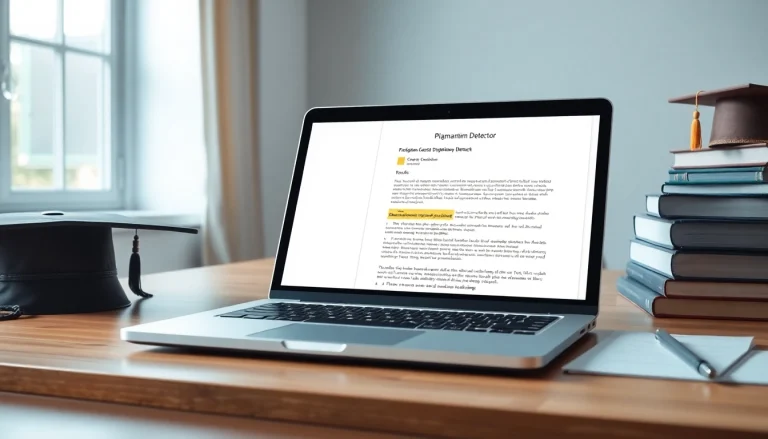
Understanding Section 8 Housing
What is Section 8 Housing?
Section 8 housing refers to a federally funded program that provides housing assistance to low-income individuals and families, helping them to afford decent, safe, and sanitary housing. Officially known as the Housing Choice Voucher Program, it allows eligible participants to choose their housing from the private rental market while the government subsidizes a portion of their rent. This initiative aims to alleviate the financial burden on families and enhance their living conditions, ultimately promoting stability and self-sufficiency within communities.
Benefits of Investing in Section 8 Housing
Investing in Section 8 housing presents numerous benefits for landlords and investors. Firstly, the program provides guaranteed monthly payments directly from the government, which constitutes a stable income stream regardless of the tenant’s employment status. This security can be particularly appealing during economic downturns when traditional rental markets may experience higher vacancy rates.
Secondly, Section 8 housing tends to attract a large pool of potential tenants as it addresses affordability issues directly. The demand for affordable housing is persistently high, meaning owners can easily find and retain tenants. Moreover, many Section 8 applicants are diligent about maintaining their housing to uphold their eligibility for assistance, often leading to lower turnover rates.
Eligibility and Requirements for Section 8 Programs
Eligibility for Section 8 housing involves various criteria primarily focused on income levels, family composition, and citizenship status. The household income must typically be at or below 50% of the area median income, but preference is given to those earning 30% or less. Additionally, individuals applying for Section 8 must be U.S. citizens or eligible non-citizens such as certain lawfully present immigrants.
Landlords who wish to participate in the Section 8 program must ensure their properties meet specific health and safety standards, passing inspections conducted by local Public Housing Authorities (PHAs). Notably, compliance with local building codes and regulations is essential for maintaining eligibility and continued participation in the program.
How to Buy Section 8 Housing
Finding Properties with Section 8 Tenants
Acquiring properties already rented by Section 8 tenants can streamline your investment process. One effective strategy is to leverage listings that specify whether a property is already enrolled in the program. Websites like buy section 8 housing provide resources and connections that can lead you to suitable listings.
Networking with real estate agents who specialize in Section 8 housing can also enhance your search for viable properties. These agents often have comprehensive knowledge of the local market and can guide you towards promising investment opportunities that fit your criteria.
Working with Real Estate Agents Specializing in Section 8
Engaging a real estate agent with expertise in Section 8 housing can be immensely beneficial for prospective buyers. These professionals are adept at understanding the nuances of the market, including zoning laws, compliance with HUD regulations, and the unique requirements of Section 8 tenants.
Furthermore, experienced agents can help negotiate better pricing and favorable contract terms, given their familiarity with the challenges and advantages of investing in Section 8 properties. They can also provide insights into local rental markets, appraisals, and property potential appreciation.
Negotiating Prices and Contracts for Section 8 Properties
Negotiating the purchase of Section 8 properties requires a keen understanding of their unique valuation. Buyers should conduct thorough research on comparable sales in the area to establish a fair market value while recognizing the steady income potential from Section 8 rentals. A nuanced approach will allow informed negotiations with sellers.
Contracts for Section 8 properties often include stipulations concerning the necessary compliance with PHAs and the requirement that new landlords maintain the existing rental agreements. Buyers should work closely with legal professionals to ensure all terms align with local regulations and the needs of the tenants.
Financing Options for Section 8 Housing
Using FHA Loans for Purchasing Section 8 Properties
FHA loans are a popular financing option for buying residential properties, including those with Section 8 tenants. These loans require lower down payments compared to traditional mortgages, making them accessible for many investors. The federal backing of FHA loans allows lenders to offer more favorable borrowing terms, which is an attractive proposition for those looking to enter the investment market.
Utilizing FHA financing also provides the opportunity to purchase duplexes or multifamily properties, where buyers can reside in one unit while renting out the others, including those to Section 8 tenants. This resident-landlord arrangement can offer a solid income while balancing the homeowner’s lifestyle.
Understanding Government Grants and Assistance Programs
Besides traditional financing methods, potential buyers should explore various government grants and assistance programs designed to encourage investment in affordable housing. Federal, state, and local governments often provide grants, low-interest loans, or tax credits specifically tailored for investors purchasing Section 8 properties.
Taking advantage of such programs can help mitigate upfront costs and enhance overall return on investment. It’s crucial to stay updated on the specific eligibility requirements and application processes since they can vary regionally.
Leveraging Cash Flow from Rent for Investment
Investors can strategically use cash flow generated from Section 8 properties to reinvest in additional properties or enhance existing ones. The reliable stream of rental income can facilitate the financing of improvements or expansions, which can increase property value and rental yield.
Moreover, having a clear understanding of operating expenses will enable investors to assess their profitability accurately. This includes maintenance costs, property management fees, and compliance with HUD regulations—all vital for maximizing net returns.
Managing Section 8 Properties Effectively
Best Practices for Tenant Relationships
Building positive relationships with Section 8 tenants is crucial for long-term success in this investment niche. Clear communication, prompt attention to maintenance issues, and establishing mutual respect can significantly reduce tenant turnover and foster loyalty. Treating tenants as partners helps in establishing a reliable and cooperative living environment.
Moreover, being proactive in educating tenants about their responsibilities and rights under Section 8 can lead to a more harmonious landlord-tenant dynamic. Ensuring tenants are aware of the housing agency and the scope of the service can create pathways for effective conflict resolution.
Maintaining Your Section 8 Property
Regular maintenance is paramount for keeping a Section 8 property compliant with HUD’s strict housing quality standards. Routine inspections and maintenance checks not only ensure tenant safety and satisfaction but also prevent costly repairs that can arise from neglect.
Having a reliable maintenance team or management service can facilitate timely responses to issues, thus enhancing tenant trust and retention rates. Keeping the property in good condition will also safeguard your investment against market fluctuations.
Complying with Local HUD Regulations
Adhering to local HUD regulations is essential for every landlord involved in the Section 8 program. These regulations primarily focus on ensuring safety and health standards, which can vary depending on the state or city. Staying informed about changes in the law, rental payment standards, and eviction procedures is crucial for avoiding potential penalties and maintaining eligibility in the program.
Engaging with local housing authorities and keeping open communication can help navigate any compliance challenges and ensure that your properties meet the necessary legal requirements.
Maximizing Your Investment in Section 8 Housing
Tips for Expanding Your Section 8 Portfolio
Expanding your Section 8 property portfolio can require strategic planning and market analysis. Start by determining the areas with high demand for affordable housing, as these locations offer better long-term investment potential.
Consider applying for additional financing or forming partnerships with other investors to increase your purchasing power. Additionally, leveraging online real estate platforms can provide insights into emerging markets and properties that fit your investment criteria.
Assessing the Financial Returns of Section 8 Properties
To evaluate the financial returns on your Section 8 investments, analyze key performance indicators such as return on investment (ROI), cash-on-cash return, and capitalization rates. These metrics will provide a comprehensive overview of your property’s performance and inform decisions regarding future investments.
Understanding rental appreciation trends and demographic shifts can also bolster predictions about property performance, helping investors make informed decisions about when to sell or reinvest.
Leveraging Technology for Property Management
Utilizing technology in property management can substantially boost efficiency and enhance tenant engagement. Property management software streamlines rent collection, maintenance requests, and communication with tenants, making processes more transparent.
Moreover, leveraging online marketing and social media can help in reaching potential Section 8 tenants, showcasing available properties, and maximizing visibility within the housing market.






